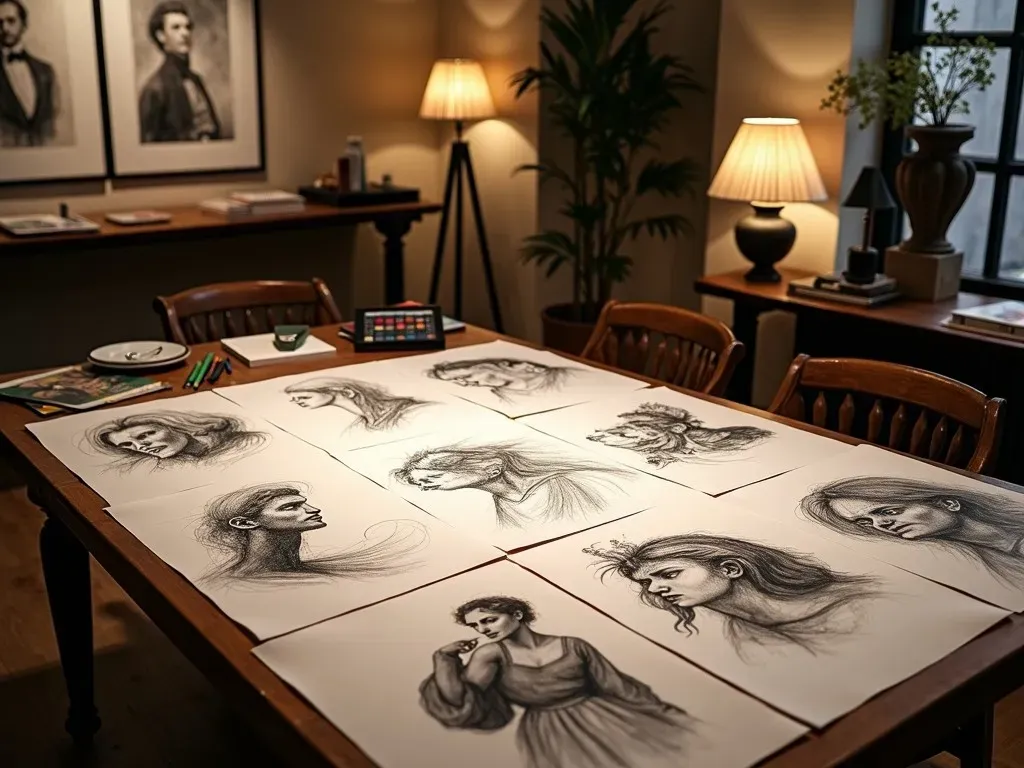Art by famous people has always captured the imagination and curiosity of the public. From the enchanting strokes of Leonardo da Vinci to the vibrant hues of Frida Kahlo, the artworks created by renowned figures offer a glimpse into their minds and cultural contexts. These pieces often transcend mere aesthetics to tell powerful stories, embody cultural movements, and evoke emotions across generations.
The Impact of Celebrity Painters on Art History
Famous artists wield an undeniable influence over the art world and society at large. Their works not only reflect personal styles but also mirror the social, political, and emotional ethos of their times. The following table depicts a selection of famous artists and their iconic works:
| Artist | Famous Work | Year | Medium |
|---|---|---|---|
| Leonardo da Vinci | Mona Lisa | c. 1503 | Oil on poplar wood |
| Vincent van Gogh | The Starry Night | 1889 | Oil on canvas |
| Pablo Picasso | Guernica | 1937 | Oil on canvas |
| Frida Kahlo | The Two Fridas | 1939 | Oil on canvas |
| Michelangelo | The Creation of Adam | 1512 | Fresco |
Iconic Works and Their Famous Creators
Leonardo da Vinci
Renowned for mastering realism, Leonardo da Vinci’s works such as the Mona Lisa and The Last Supper remain pivotal in art history. His innovative Techniques and keen observation of human anatomy revolutionized representation.
Vincent van Gogh
The Dutch post-impressionist painter, Vincent van Gogh, created over 2,100 artworks in just over a decade. His emotionally charged works, including The Starry Night, showcase bold colors and expressive brushwork.
Pablo Picasso
Pablo Picasso, co-founder of the Cubist movement, produced thousands of paintings, drawings, and sculptures. Guernica, painted during the Spanish Civil War, remains a powerful political statement against war and violence.
Frida Kahlo
Mexican artist Frida Kahlo is celebrated for her unique visual language and exploration of identity, pain, and femininity. Her self-portraits, particularly The Two Fridas, are poignant reflections of her dual heritage and personal struggles.
Celebrity Paintings: Beyond the Canvas
In addition to traditional artworks, many celebrities have ventured into painting, blending their fame with artistic expression. For instance:
- Bob Dylan, known for his musical genius, has created a series of paintings that reflect his poetic mind, infusing his music with visual artistry.
- Johnny Depp has also dabbled in painting, creating pieces inspired by his experiences and environmental themes.
- Miley Cyrus combines elements of pop culture and personal identity in her vibrant canvases.
Notable Celebrity Painters
| Celebrity | Notable Work | Year | Theme |
|---|---|---|---|
| Bob Dylan | The Asia Series | 2020 | Cultural reflections |
| Johnny Depp | The Crow Portrait | 2018 | Identity and nostalgia |
| Miley Cyrus | Love and Hope Series | 2021 | Inner struggles |
Artwork by Famous People: The Emotional Connection
Art created by famous people often resonates with audiences due to its emotional depth. These artists channel their experiences into their work, creating a visceral connection with viewers.
-
Emotional Themes: Artists like Kahlo and van Gogh express personal pain and joy through color and form. For instance, Kahlo’s self-portraits reveal her tumultuous relationship with identity and health.
-
Societal Impact: Picasso’s Guernica is a prime example of art responding to societal issues. This monumental work represents the horrors of war and has become a universal symbol against violence.
Exploring Famous Drawings by Famous Artists
In addition to their paintings, many famed artists created memorable drawings that elucidate their creative processes. These sketches often serve as studies for larger works or stand alone as significant pieces in their own right.
| Artist | Famous Drawing | Year | Medium |
|---|---|---|---|
| Leonardo da Vinci | Study of a Flying Machine | c. 1500 | Pen and ink |
| Edgar Degas | The Ballet Class | c. 1874 | Pastel |
| Keith Haring | Radiant Baby | 1982 | Acrylic on canvas |
FAQs
What defines art by famous people?
Art by famous people refers to artworks created by renowned or celebrated figures, often resulting in pieces that carry significant cultural or historical weight.
Are there contemporary famous artists?
Yes, contemporary artists like Yayoi Kusama and Banksy have gained fame for their distinctive styles and thought-provoking messages, continuing the tradition of impactful artwork by famous individuals.
How has technology influenced artwork by famous people?
Technology has democratized art creation and distribution, allowing famous artists to engage with their audiences through various digital mediums, including virtual art exhibitions and social media platforms.
Can anyone create artwork similar to that of famous artists?
Absolutely. While techniques and styles may vary, anyone can draw Inspiration from famous artists to explore their own creativity. Art is personal, and personal expression can mirror stylistic influences.
Where can I find collections of art by famous artists?
Museums, galleries, and online platforms such as Museums of the World offer vast collections showcasing artwork by famous artists from various time periods.
In summary, the-world of art created by famous individuals is rich, multi-faceted, and intimately connected to the human experience. Their masterpieces continue to inspire, provoke, and transform our perception of art and its place in society.
